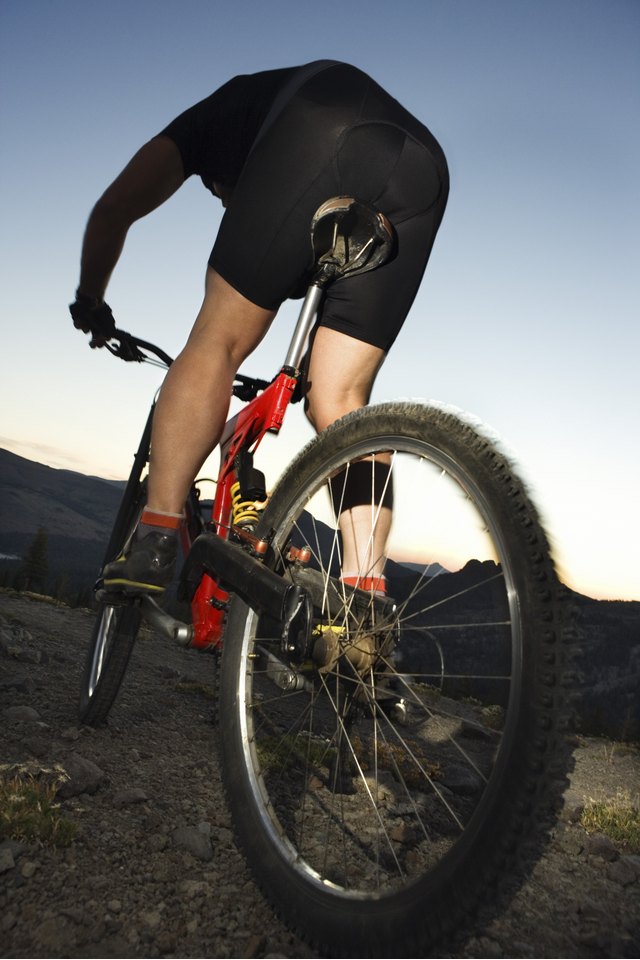Mountain Bike Tires 2.1 Vs. 1.95

The vast majority of mountain bike tires are 26 inches in diameter. Most mountain bike tires are interchangeable, but there are different widths that impact performance. Mountain bike widths run from 1.8 to 2.5 inches or more, but a lot of mountain bikers choose either 1.95-inch or 2.1-inch wide tires. One tire is considered narrow, the other fat. There are subtle differences in the way they feel and perform. If you're choosy about your mountain bike tires or you want to compete in races, these small differences might make all the difference.
Rolling Resistance and Weight
Physics determine that smaller tires roll faster than wider tires. Rolling resistance is the friction between the road and the tire; the less tire, the less resistance. When tires roll over the ground, they leave a footprint. This footprint is wider on 2.1 inch tires, giving them more rolling resistance and making them slightly slower. Another factor is weight; 2.1-inch tires are slightly heavier than 1.95-inch tires. With this in mind, mountain bike racers will typically choose the skinny tire for more speed and less weight.
Knobs and Pressure
Tread patterns for fatter tires are typically more aggressive. This means that 2.1-inch tires typically have larger knobs, more knobs or pointed, sharp knobs designed to grip dirt for better traction. Skinny tires, such as the 1.95, are often manufactured as semi-slicks with shorter, more refined knobs. Skinny tires work better on pavement, cement or hard-packed trails. They also typically run higher pressures, making them more responsive than 2.1-inch tires. For road riding, 1.95-inch tires are best.
Tubes and Talc
For the most part, you can interchange the two tube sizes. Either one will fit both tires. It's usually not recommended to place a 2.1-inch tube in a smaller tire because it can cause the tube to become wrinkled as it is prevented from expanding to its fullest size. But putting a 1.95-inch tube in a 2.1-inch tire is perfectly acceptable. Mountain bikers do it all the time. The smaller tube expands to fit the tire. One important tip; always put talc or baby powder inside the tire before putting the tube in. It lets the tube slip around inside before it's completely expanded, which makes it fit better.
Float and Compromise
Wider tires work better on loose mountain trails. The 2.1 is at home around forested, single-track trails. The skinny 1.95 tire is found more often in deserts, on hard-packed trails or climbing over slick rocks. But if the trail is sandy, the 2.1-inch tire is better because of float. Wider tires ride up on top of loose material. Skinny tires cut down into the material, causing the tire to bog down. For all-around riding, you can compromise and choose a 2.0 tire for the best of both worlds. This is one of the most common sizes, and they can be purchased with almost any type of tread pattern.
References
Writer Bio
Specializing in hardwood furniture, trim carpentry, cabinets, home improvement and architectural millwork, Wade Shaddy has worked in homebuilding since 1972. Shaddy has also worked as a newspaper reporter and writer, and as a contributing writer for Bicycling Magazine. Shaddy began publishing in various magazines in 1992, and published a novel, “Dark Canyon,” in 2008.
